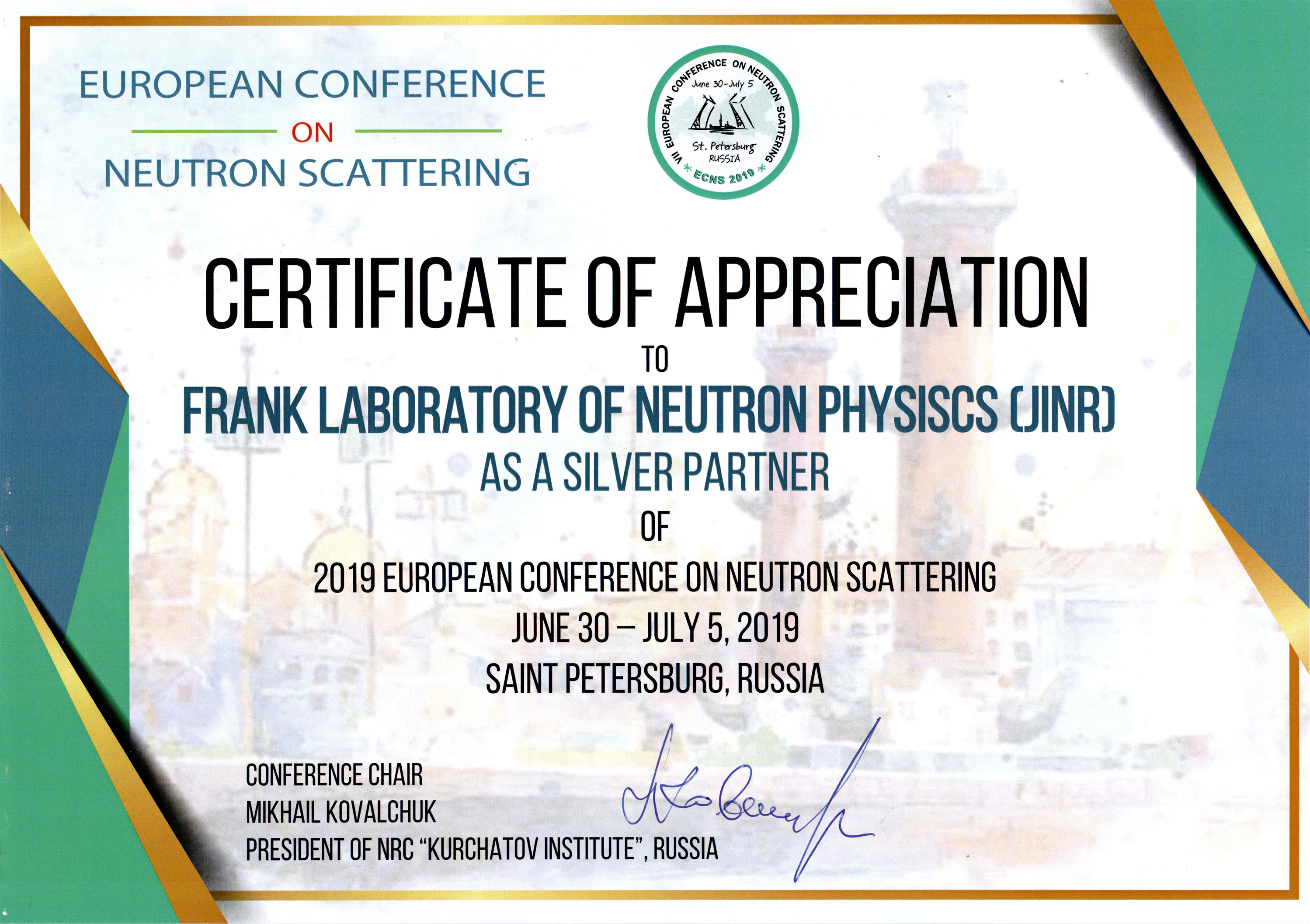ECNS-2019 was held in St. Petersburg
News, 26 July 2019
The traditional European Conference on Neutron Scattering ECNS-2019 was held in St. Petersburg, Russia, from 30 June to 5 July 2019.
Organizers of the Conference were the European Neutron Scattering Association (ENSA) and the Russian National Research Center “Kurchatov Institute” (NRC KI). They placed particular emphasis on topics related to the development of the research programme for two high-flux neutron sources currently being constructed in Europe: the European Spallation Source ESS (Lund, Sweden) and the stationary reactor PIK (Gatchina, Russia).
Scientists from the European Neutron Community (more than 650 participants) represented a wide range of disciplines that actively utilize neutron scattering techniques, including physics, biology, chemistry, materials science, engineering materials science, earth sciences, and methodological areas related to the development of neutron sources and their instrumentation. General problems of the development of scientific research at large-scale facilities, such as specialized sources of synchrotron radiation and neutrons, were discussed on the opening day as well as at parallel microsymposia, namely “Scientific Methods for Cultural Heritage”, “Nuclear Medicine”, “Synchrotron and Neutron Research and Infrastructure”.
During the Conference, the Medal of the Russian Neutron Scattering Society for “Outstanding Achievements in the field of Neutron Scattering” was awarded to a representative of JINR, FLNP Chief Researcher, Prof., Doctor of Physics and Mathematics A. M. Balagurov. The JINR delegation (more than 30 FLNP employees) presented the results of investigations at neutron sources IBR-2 and IREN, including 1 plenary lecture and 8 invited talks. During the traditional exhibition of neutron centers, the FLNP stand acquainted the participants of the Conference with work and plans for the development of JINR neutron sources. Participants of the Conference and satellite microsymposia had the opportunity to get the most complete information about the capabilities of the existing spectrometers and the details on applying for experimental beamtime at the IBR-2 in the frames of the user policy.
